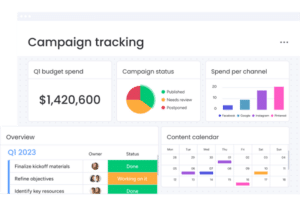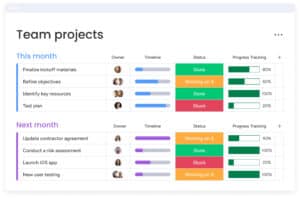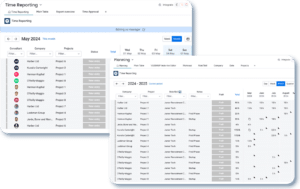Introduction
In today’s digital age, the quest for enhanced customer service efficiency is leading many businesses towards innovative solutions. Among these, the adoption of chatbots for automating customer support stands out as a transformative strategy. Chatbots, with their ability to provide instant, 24/7 responses, are revolutionizing how businesses interact with their customers. This blog post delves into the strategies for automating customer support with chatbots, offering insights into their implementation, benefits, and the future direction of this technology.
The Rising Significance of Chatbots in Automating Customer Support
As consumers increasingly seek swift and convenient support, the role of chatbots in automating customer service processes has grown exponentially. These AI-powered tools streamline operations and ensure that customer engagements are handled with precision and personalization, at any time of the day.
The Dual Benefit: Efficiency and Customer Satisfaction
By integrating strategies for automating customer support with chatbots, businesses can achieve a dual benefit: enhanced operational efficiency and elevated customer satisfaction levels. Chatbots can handle a multitude of queries simultaneously, reducing wait times and freeing up human agents to tackle more complex issues. This optimises the customer support experience.
Navigating the Challenges of Automation
While the advantages of automating customer support with chatbots are clear, it’s crucial to navigate potential challenges with strategic planning. These challenges range from ensuring the chatbots understand and respond accurately to diverse customer queries, to maintaining a balance between automated and human touch in customer service. In the subsequent sections, we will explore strategies to address these challenges effectively, ensuring a smooth integration of chatbots into your customer support framework.
Understanding the Role of Chatbots in Customer Support
Integrating strategies for automating customer support with chatbots marks a significant shift in how businesses approach customer service. These AI-powered entities are not just tools but pivotal components in delivering efficient, round-the-clock support to customers. In this section, we’ll explore the evolution of chatbots, highlight their benefits, and discuss how to tackle the challenges they pose.
The Evolution of Chatbots in Customer Service
Chatbots have come a long way from simple, rule-based programs to sophisticated AI-driven assistants capable of understanding and processing natural language. This evolution has been driven by advancements in AI, machine learning, and natural language processing (NLP) technologies, allowing chatbots to offer more nuanced and contextually relevant responses. From handling basic inquiries to providing personalized recommendations, chatbots have become an integral part of modern customer support strategies.
Benefits of Automating Customer Support with Chatbots
- 24/7 Availability: Chatbots can operate around the clock, ensuring customers receive immediate assistance, regardless of the time or day.
- Scalability: They can handle a vast number of queries simultaneously, making them ideal for managing high volumes of customer interactions.
- Cost Efficiency: By automating routine tasks, chatbots can significantly reduce operational costs and free up human agents to focus on more complex issues.
- Personalized Customer Experience: Advanced chatbots can leverage customer data to provide personalized responses, enhancing the overall customer experience.
Potential Challenges and How to Overcome Them
While chatbots offer numerous advantages, they also come with a set of challenges. These include:
- Loss of Personal Touch: Ensuring chatbots don’t completely replace the human element in customer service is crucial. Strategies like hybrid support models, where chatbots and human agents work in tandem, can help maintain personalization.
- Handling Complex Queries: Chatbots may struggle with complex or nuanced customer issues. To address this, implementing a seamless handoff process to human agents when the chatbot reaches its limits can ensure customer queries are resolved efficiently.
- Privacy and Security Concerns: With chatbots handling sensitive customer data, ensuring robust security measures are in place is paramount. Regular audits and adherence to data protection regulations can mitigate risks.
Omnitas Newsletter
Sign up for our monthly newsletter to stay up-to-date on our latest blog articles, videos and events!
Thank you!
You have successfully joined our subscriber list.
Key Strategies for Implementing Chatbots in Customer Support
The implementation of chatbots into customer support is more than just a technical deployment. It’s about strategically aligning them with business goals and customer needs. Here, we outline essential strategies to ensure chatbots deliver value and efficiency to your customer support framework.
Identifying Customer Support Processes Suitable for Automation
The first step in leveraging chatbots effectively is to identify which aspects of your customer support can be automated. Start with routine inquiries and repetitive tasks that don’t require human intervention, such as FAQs, order tracking, and basic troubleshooting. This not only improves efficiency but also allows your human agents to focus on more complex and sensitive issues, where a personal touch is indispensable.
Choosing the Right Chatbot Platform
Selecting an appropriate chatbot platform is critical to the success of your automation strategy. Consider platforms that offer:
- Integration Capabilities: Look for chatbot solutions that seamlessly integrate with your existing customer support software, CRM systems, and other business tools. Integration with other platforms can significantly enhance automation capabilities, enabling a more cohesive and efficient workflow.
- AI and Learning Abilities: Opt for chatbots with advanced AI and machine learning capabilities. These features allow chatbots to learn from interactions and improve over time, delivering more accurate and personalized responses to customer queries.
- Customization Options: The ability to customize the chatbot’s responses, personality, and interaction flow is crucial. It ensures the chatbot aligns with your brand’s voice and meets your specific customer support needs.
Designing an Effective Chatbot User Experience
Crafting a user-friendly chatbot experience is essential for engaging and retaining customers. This involves:
- Clear Communication: Design your chatbot’s conversation flow to be clear, concise, and easy to navigate. Ensure it can effectively guide customers through various support queries or processes without causing frustration.
- Escalation Pathways: Implement clear escalation pathways within the chatbot’s design. If a query exceeds the chatbot’s capabilities, it should smoothly transition the customer to a human agent without disrupting the service experience.
- Feedback Mechanism: Incorporate a feedback mechanism within the chatbot interaction. This allows customers to rate their experience or provide suggestions. As a result, this offers valuable insights to continuously refine and improve the chatbot’s performance.
Advanced Chatbot Features to Enhance Customer Support
Incorporating advanced features into chatbots can transform them from simple query-handling tools into dynamic, intelligent agents capable of delivering personalized and predictive customer support. Here’s how you can harness these features to your advantage.
Natural Language Processing (NLP) and Its Importance
Natural Language Processing (NLP) stands at the core of advanced chatbot functionalities. It allows chatbots to understand, interpret, and generate human-like responses. Implementing NLP:
- Improves Comprehension: Enables chatbots to grasp the context and nuances of customer queries, leading to more accurate responses.
- Enhances Conversational Flows: Facilitates more natural and engaging conversations, making interactions with the chatbot feel more human-like.
- Supports Multiple Languages: Expands your customer support reach by enabling the chatbot to communicate in various languages, catering to a global audience.
Personalisation and Predictive Customer Support
Personalization is key to delivering exceptional customer support. Advanced chatbots can analyze customer data and past interactions to offer personalized assistance, recommendations, and solutions. This level of personalization:
- Increases Customer Satisfaction: Customers feel valued and understood, leading to higher satisfaction and loyalty.
- Boosts Efficiency: By anticipating customer needs, chatbots can resolve queries faster, reducing the overall time spent on customer support.
- Drives Sales and Engagement: Personalized recommendations can encourage customers to explore additional products or services, enhancing sales opportunities.
Integration with CRM and Other Support Tools
Integrating chatbots with Customer Relationship Management (CRM) systems and other support tools is crucial for a seamless customer support experience. This integration:
- Provides a 360-degree View of the Customer: Chatbots can access customer history, preferences, and previous interactions, enabling them to offer tailored support.
- Enables Omnichannel Support: Ensures consistent customer support across various channels (web, social media, email), enhancing the customer experience.
- Facilitates Data Collection and Analysis: Collects valuable data from chatbot interactions, which can be analyzed for insights into customer behaviour, preferences, and support issues, guiding future improvements.
Measuring the Success of Your Chatbot Strategy
Implementing chatbots is a strategic move, but understanding their performance and impact is what truly makes the strategy successful. It’s essential to establish clear metrics and KPIs that will help you gauge the effectiveness of your chatbots and identify areas for improvement.
Key Performance Indicators (KPIs) to Track
To measure the success of your chatbot strategy, several key performance indicators should be monitored:
- Customer Satisfaction Score (CSAT): Gather feedback directly from customers regarding their experience with the chatbot. This can be done through quick surveys at the end of a chat session.
- Resolution Rate: Measure the percentage of queries fully resolved by the chatbot without human intervention. A high-resolution rate indicates the chatbot is effectively handling customer queries.
- Response Time: Track how quickly the chatbot responds to customer queries. Faster response times are often correlated with higher customer satisfaction.
- Conversion Rate: If applicable, monitor how well chatbot interactions lead to desired outcomes, such as sales or lead generation.
Gathering Customer Feedback on Chatbot Interactions
Customer feedback is invaluable for refining your chatbot strategy. It provides insights into what customers appreciate and where they face issues, allowing for targeted improvements. Implement mechanisms to easily collect feedback during or after chatbot interactions, such as:
- Integrated Feedback Prompts: Simple prompts at the end of a chat session asking customers to rate their experience or provide comments.
- Follow-up Surveys: Sending a follow-up survey via email or SMS to collect more detailed feedback on the customer’s experience.
Utilising Analytics Tools for In-depth Analysis
Leverage analytics tools to dive deeper into chatbot performance data. These tools can help you:
- Identify Common Queries: Understanding the most common questions or issues customers bring to the chatbot can help you optimize its knowledge base and response accuracy.
- Track User Engagement: Analyse how customers interact with the chatbot, including session duration and dropout rates, to identify potential friction points.
- Monitor Chatbot Learning Over Time: For AI-powered chatbots, tracking how the chatbot’s responses and accuracy evolve over time is crucial for assessing its learning capabilities.

Future Trends in Chatbot Technology and Customer Support
The landscape of chatbot technology is rapidly changing, with new developments on the horizon set to further enhance how businesses interact with their customers. Staying ahead of these trends will be crucial for companies looking to maintain competitive advantage and offer unparalleled customer support.
Advances in AI and Machine Learning
The future of chatbots lies in the continuous improvement of AI and machine learning technologies. These advancements will enable chatbots to:
- Understand Context Better: Future chatbots will most likely improve in understanding the context and history of conversations, allowing for more accurate and relevant responses.
- Learn from Interactions: Enhanced learning algorithms will enable chatbots to improve their responses over time. They’ll be able to learn from past interactions to provide better support in future conversations.
- Offer Predictive Support: By analyzing customer data and behaviour, chatbots will be able to anticipate customer needs and offer solutions before the customer even identifies an issue.
The Role of Chatbots in Omnichannel Support
As businesses strive to provide a cohesive customer experience across all touchpoints, chatbots will play a pivotal role in omnichannel support strategies. This involves:
- Seamless Integration Across Platforms: Chatbots will most likely be integrated across various channels. These include social media, messaging apps, and company websites, providing consistent support regardless of where the customer chooses to engage.
- Unified Customer Views: Future chatbot platforms could offer integrated customer profiles, enabling chatbots to provide personalised support based on the customer’s history and preferences across all channels.
Enhancing Customer Experience with Voice and Visual Capabilities
The integration of voice and visual capabilities is set to redefine the chatbot experience. This includes:
- Voice-Activated Chatbots: As voice assistants become more prevalent, voice-activated chatbots will become a primary means of customer interaction, offering a hands-free support option.
- Visual Support Features: Future chatbots may include capabilities like augmented reality (AR) to help customers with tasks such as setting up a product or navigating a service, enhancing the interactive experience.
Conclusion
The journey through the strategies for automating customer support with chatbots reveals a landscape rich with opportunity and innovation. Chatbots, powered by the latest advancements in AI and machine learning, have become indispensable tools for businesses seeking to elevate their customer service. By offering round-the-clock availability, scalability, and the ability to provide personalized interactions, chatbots are reshaping the way companies engage with their customers.
The implementation of chatbots, however, is not just about deploying a new technology. It’s about strategically integrating this tool into your customer support framework to enhance efficiency, improve customer satisfaction, and drive business growth. As we’ve explored, this involves identifying suitable processes for automation, choosing the right chatbot platform, designing an effective user experience, and leveraging advanced features to meet the evolving needs of customers.
Looking Ahead
The future of chatbot technology promises even greater advancements. With improvements in AI, machine learning, and natural language processing, along with the integration of omnichannel support and voice and visual capabilities, chatbots are set to offer even more sophisticated and seamless support experiences. These advancements will not only meet but exceed customer expectations, setting new standards for what is possible in customer service.
As we stand on the brink of this exciting future, it’s clear that chatbots are more than just a trend. They are a fundamental shift in how businesses interact with their customers. Embracing chatbot technology today means preparing your business for the customer support demands of tomorrow. You ensure that you remain competitive in an ever-evolving digital landscape.
In conclusion, implementing strategies for automating customer support with chatbots is not just a pathway to operational efficiency and cost savings. It’s a commitment to delivering exceptional customer experiences. As businesses continue to navigate the challenges and opportunities presented by chatbot technology, one thing is certain. The potential for innovation and improvement is boundless. Let’s embrace this journey with open arms, ready to transform customer support into something truly remarkable.
If you found this blog post useful, make sure to sign up for our monthly newsletter below. Stay in the loop regarding all things business efficiency and automation!
























